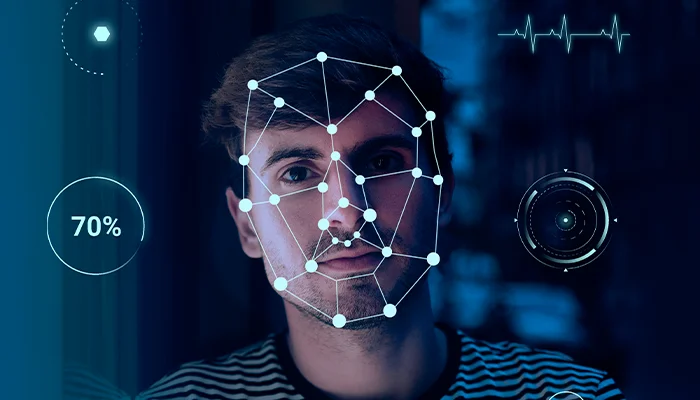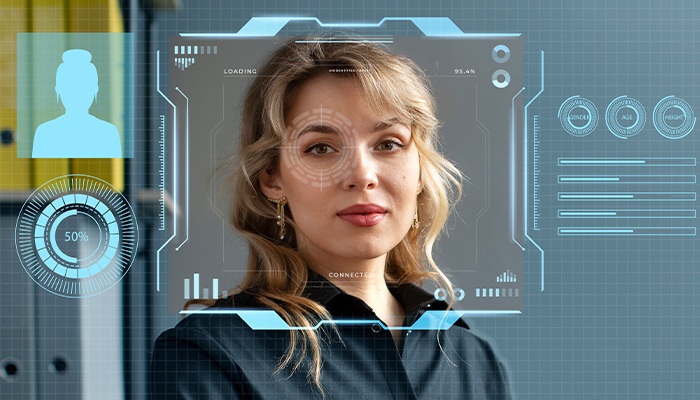Facial Recognition System Development: The Why’s and How’s

JUL, 19, 2024 17:25 PM
Facial Recognition System Development: The Why’s and How’s
Facial recognition technology has seen significant advancements and increased adoption over the last decade. From unlocking smartphones to sophisticated security systems, facial recognition is transforming the way we interact with technology. As businesses and organizations look to integrate this technology, understanding the why's and how's of facial recognition system development is crucial. This comprehensive guide delves into the reasons behind the growing interest in facial recognition systems and provides an in-depth look at the development process.
Why develop a facial recognition system?
1. Enhanced Security
Facial recognition systems offer a high level of security. Unlike passwords or PINs, facial features are unique and cannot be easily replicated. This makes facial recognition an excellent tool for preventing unauthorized access to secure areas, devices, and sensitive data. Airports, banks, and government institutions are increasingly adopting facial recognition to enhance security protocols.
2. Convenience and Efficiency
Facial recognition provides a convenient and efficient way to authenticate identity. Users can unlock their devices, access services, and complete transactions quickly and seamlessly. This ease of use is particularly valuable in scenarios where speed and user experience are critical, such as at airport check-ins, retail stores, and event venues.
3. Reduction in Fraud
By verifying identities through biometric data, facial recognition systems help reduce fraud. Financial institutions, for instance, can use facial recognition to confirm the identity of customers during online transactions, reducing the risk of identity theft and fraudulent activities. This technology can also be used in voting systems to ensure that each vote is cast by the rightful person.
4. Improved customer experience
In the retail and hospitality sectors, facial recognition can enhance the customer experience. For example, in retail stores, the technology can identify loyal customers and personalize their shopping experience by recommending products based on their previous purchases. In hotels, guests can be greeted by name and offered personalized services, making their stay more enjoyable.
5. Law Enforcement and Public Safety
Facial recognition plays a crucial role in law enforcement and public safety. It aids in the identification and apprehension of suspects by matching faces captured on surveillance cameras with criminal databases. Additionally, it helps in locating missing persons and identifying victims of disasters.
6. Workforce Management
Businesses can use facial recognition to manage their workforce more effectively. By automating attendance and access control, companies can reduce administrative overhead and ensure that only authorized personnel access certain areas. This also minimizes the risk of time fraud and enhances overall productivity.
7. Healthcare Applications
In healthcare, facial recognition can be used for patient identification, ensuring that medical records are accurately matched to the correct individual. This reduces the risk of medical errors and enhances the overall efficiency of healthcare delivery. Additionally, the technology can be used in telemedicine to verify the identity of patients during virtual consultations.
How to Develop a Facial Recognition System
Developing a facial recognition system involves several stages, from conceptualization to deployment. The following sections outline the key steps in the development process.
1. Define the scope and objectives.
Before diving into development, it’s essential to define the scope and objectives of your facial recognition system. Consider the following questions:
- What problem are you trying to solve?
- Who will be the end-users of the system?
- What are the specific requirements and constraints?
- How will the system integrate with the existing infrastructure?
Having a clear understanding of these aspects will guide the development process and ensure that the system meets the intended goals.
2. Conduct market research and feasibility studies.
Conduct thorough market research to understand the current landscape of facial recognition technology. Analyze existing solutions, identify gaps, and explore potential opportunities. Additionally, perform a feasibility study to assess the technical, financial, and legal aspects of the project. This includes evaluating the availability of necessary hardware and software, estimating development costs, and understanding regulatory requirements related to privacy and data protection.
3. Choose the Right Technology Stack
Selecting the appropriate technology stack is critical for the success of your facial recognition system. The technology stack includes programming languages, frameworks, libraries, and tools required for development. Key components to consider include:
- Programming languages: Python, Java, and C++ are commonly used for developing facial recognition systems.
- Libraries and Frameworks: OpenCV, Dlib, and TensorFlow are popular libraries for image processing and machine learning.
- Databases: Choose a robust database to store facial data securely. MongoDB, PostgreSQL, and MySQL are viable options.
- Hardware: Depending on the application, you may need specialized hardware such as high-resolution cameras, GPUs, and edge devices.
4. Data Collection and Preprocessing
Facial recognition systems rely on large datasets of facial images for training and testing. Collecting high-quality, diverse datasets is crucial for building an accurate and reliable system. Sources for data collection include publicly available datasets, custom datasets collected through cameras, and synthetic data generated using techniques like generative adversarial networks (GANs).
Once collected, the data must be preprocessed to enhance its quality and ensure consistency. Common preprocessing steps include:
- Face Detection: Identify and extract faces from images or video frames using algorithms like Haar cascades, Single Shot Multibox Detector (SSD), or You Only Look Once (YOLO).
- Normalization: Standardize the size, orientation, and lighting conditions of facial images to ensure uniformity.
- Augmentation: Generate additional training data by applying transformations such as rotation, scaling, and flipping to existing images.
5. Feature Extraction

Feature extraction involves identifying and encoding unique facial features that can be used to distinguish one face from another. Techniques for feature extraction include:
- Geometric Methods: Focus on the spatial relationships between facial landmarks such as eyes, nose, and mouth.
- Appearance-Based Methods: Use pixel intensity values and texture information to represent facial features.
- Deep Learning: Convolutional Neural Networks (CNNs) and other deep learning models automatically learn and extract high-level features from facial images.
6. Model Training and Evaluation
Training a facial recognition model involves feeding the preprocessed data into a machine learning algorithm to learn the patterns and features that differentiate faces. Common algorithms used in facial recognition include:
- Principal Component Analysis (PCA) is a linear dimensionality reduction technique that transforms the data into a set of uncorrelated variables called principal components.
- Linear Discriminant Analysis (LDA) is a classification method that finds the linear combination of features that best separates different classes.
- Support Vector Machines (SVM): A supervised learning algorithm that finds the optimal hyperplane for separating different classes.
- Deep Learning Models: CNNs, ResNet, and other neural network architectures that excel in image recognition tasks.
After training, evaluate the model's performance using metrics such as accuracy, precision, recall, and F1 score. Use techniques like cross-validation and confusion matrices to assess the model's robustness and identify areas for improvement.
7. System Integration
Integrating the facial recognition model into a complete system involves developing the necessary software components and interfaces. Key aspects of system integration include:
- Backend Development: Implement the server-side logic, including APIs for image upload, processing, and result retrieval. Use frameworks like Flask, Django, or Node.js for backend development.
- Frontend Development: Create user interfaces for capturing and displaying facial recognition results. Use web technologies like HTML, CSS, and JavaScript or mobile development frameworks like React Native and Flutter.
- Database Management: Implement secure storage and retrieval mechanisms for facial data and recognition results.
- Security: Ensure that the system adheres to security best practices, including data encryption, access control, and regular security audits.
8. Testing and Validation
Thorough testing and validation are essential to ensuring the reliability and accuracy of the facial recognition system. Conduct various types of testing, including:
- Unit Testing: Test individual components and functions to ensure they work correctly in isolation.
- Integration Testing: Verify that different components of the system work together seamlessly.
- Performance Testing: Assess the system's performance under different conditions, including varying lighting, angles, and distances.
- User Testing: Gather feedback from real users to identify usability issues and areas for improvement.
9. Deployment and Maintenance
Deploy the facial recognition system in the intended environment, whether it’s on-premises, cloud-based, or edge devices. Ensure that the deployment process includes setting up monitoring and logging mechanisms to track system performance and detect anomalies.
Ongoing maintenance is crucial to keep the system updated and address any issues that arise. Regularly update the system with new data and retrain the model to improve accuracy and adapt to changing conditions. Additionally, stay informed about advancements in facial recognition technology and incorporate new techniques and algorithms as needed.
10. Ethical and Legal Considerations
Facial recognition technology raises important ethical and legal considerations, particularly regarding privacy and data protection. When developing and deploying a facial recognition system, it’s essential to:
- Obtain Consent: Ensure that individuals are aware of and consent to the use of facial recognition technology.
- Data Protection: Implement robust data protection measures to safeguard facial data and comply with regulations such as the General Data Protection Regulation (GDPR) and the California Consumer Privacy Act (CCPA).
- Bias Mitigation: Address potential biases in facial recognition algorithms by using diverse datasets and regularly evaluating the system’s performance across different demographic groups.
- Transparency: Be transparent about how the system works and how data is used, and provide users with the ability to opt out if desired.
Conclusion
The development of facial recognition systems offers numerous benefits, from enhanced security and convenience to improved customer experiences and reduced fraud. However, it also involves complex technical challenges and ethical considerations. By following a structured development process, from defining objectives and conducting market research to integrating the system and addressing legal concerns, businesses can successfully develop and deploy facial recognition systems that meet their needs and adhere to ethical standards.
As technology continues to evolve, staying informed about the latest advancements and best practices will be crucial for maintaining the effectiveness and integrity of facial recognition systems. Whether you are a developer, a business owner, or a technology enthusiast, understanding the why's and how's of facial recognition system development is essential for harnessing its full potential and ensuring its responsible use.








